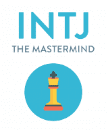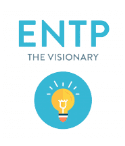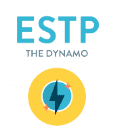MBTI Personality Inventory

The Myers-Briggs Type Indicator (MBTI) is a personality assessment tool based on the work of Swiss psychiatrist Carl Jung. It was developed by Katherine Briggs and her daughter Isabel Briggs Myers, who were inspired by Jung’s theory of personality types.
Since the dawn of time, humans have drawn up schematics to describe and categorize our personalities. From the four temperaments of the ancient civilizations to the latest advances in psychology, we have been driven to fit the variables and complexities of human personality into well-defined models. Although we are still some time away from being able to do that, the current models account for our most important personality traits and can predict our behavior with a high degree of accuracy.
Carl Gustav Jung – Theory of Psychological Types
Jung was the founder of analytical psychology. The scholar argued random variations in human behavior were explainable. He claimed these distinctions occurred because people used their perception and judgment differently. Jung said “perception” is how an individual becomes aware of items, people, events, and ideas. He defined “judgment” as the way someone develops conclusions about what they’ve perceived. Most individuals differ in the ways they perceive the world, and how they reach conclusions. Their differences correspond to their interests, reactions, values, motivations, and skills.
Jung’s theory of psychological types is perhaps the most influential creation in personality typology, and it has inspired a number of different theories. One of Jung’s key contributions was the development of the concept of Introversion and Extraversion – he theorized that each of us falls into one of these two categories, either focusing on the internal world (Introvert) or the outside world (Extravert). Besides Introversion and Extraversion, Jung coined the concept of so-called cognitive functions, separated into Judging or Perceiving categories. According to Jung, each person prefers one of these cognitive functions and may most naturally rely on it in everyday situations.
MBTI – Underlying Theory
In the 1920s Katharine Cook Briggs noticed Jung’s theory. She later co-authored a personality indicator still used today, the Myers-Briggs Type Indicator (MBTI). Briggs was a teacher with an avid interest in personality typing, having developed her own type theory before learning of Jung’s writings. Together with her daughter, Isabel Briggs Myers, they developed a convenient way to describe the order of each person’s Jungian preferences – this is how four-letter acronyms were born. The purpose of the MBTI personality inventory is to make the theory of psychological types described by C. G. Jung understandable and useful in people’s lives.
The MBTI theory suggests that people have innate preferences for certain ways of thinking, feeling, and acting. One can group them into 16 personality types. These types are based on four pairs of opposite preferences:
- Extraversion (E) vs. Introversion (I): Extraverts are energized by social interaction and external stimulation, while introverts are energized by solitude and internal reflection.
- Sensing (S) vs. Intuition (N): Sensors rely on their senses and direct experience to process information, while intuitives rely on patterns and abstract concepts to interpret information.
- Thinking (T) vs. Feeling (F): Thinkers use logical analysis to make decisions, while feelers prioritize personal values and emotions.
- Judging (J) vs. Perceiving (P): Judgers prefer structure and organization, while perceivers prefer spontaneity and flexibility.
Preference Pair 1: World Views
Individuals see the world in different ways. People who prefer to focus on the outer world them are called extroverts. Introverts focus on their inner thoughts and perceptions.
Extraversion (E): Individuals feel energetic spending time around other people are extroverts. They share several common traits.
- They can understand problems better when they talk out loud or speak to others.
- Extroverts see themselves as outgoing, people persons with a wide-range of friends.
- They feel comfortable working within groups and have a wide range of friends.
- They jump quickly into activities before thinking them over.
Introversion (I): People who feel energetic dealing with ideas, memories, reactions, or pictures are introverts. Introverts share these behavioral traits.
- Their peers see them as being reserved or reflective.
- Introverts prefer doing things alone, or with one or two people.
- They like to have a clear picture about what they’re doing before they act.
- Sometimes, they spend too much time reflecting and fail to take action quickly enough.
Preference Pair 2: Gathering Information
The next personality pair examines how people collect information from the environment. People who focus on details are sensors. Individuals that add meaning to the world are intuitive people.
Sensing (S): Sensors people pay attention to physical reality, facts, and data. They are concerned about what they see, touch, taste, smell, or hear. Sensors want to put their experience and education to practical use. They share several common traits.
- These persons work through facts until they understand problems.
- Sensors are pragmatic: they use facts to form the big picture.
- They trust their own experiences rather than symbols or words.
- Sensors miss new possibilities because they pay so much attention to facts.
Intuition (N): Intuitive people pay attention to their impressions, meanings, or patterns rather than hands-on experience. They have several traits.
- These individuals enjoy the new and different.
- They think about future events, symbols, and abstract theories.
- These persons remember impressions more than facts.
- Intuitive people solve problems by examining ideas and possibilities.
- They focus on ideas so intently that they don’t turn them into reality.
Preference Pair 3: Decision Making
People make decisions in different ways. Individuals that prefer consistency and logic are thinkers. Others who examine how their decisions will impact people and their circumstances are feelers.
Thinking (T): Thinkers make decisions using their brains. These people search for truth, regardless of the situation. Thinkers share several unique traits.
- Thinkers are task-oriented: they use logic to make decisions.
- They analyze the pros and cons of situations.
- These individuals prefer to be impersonal and fair. They don’t allow their desires or other opinions to influence them.
- Thinkers like scientific fields where logic is essential.
- These persons search for logical explanations or solutions.
- They notice inconsistencies.
Feeling (F): These individuals appear warm, caring, and tactful. Feelers make better decisions when they consider other people’s viewpoints. They try to establish harmonious relationships.
- These individuals are concerned with values and what’s good for others.
- Feelers are people or communications oriented.
- They are nervous when harmony isn’t present.
- These people search for what’s important to others.
- Feelers make heart-based, compassionate decisions.
- They won’t communicate hard truths to spare other people’s feeling.
- Feelers appear idealistic, indirect, and emotional.
Preference Pair 4: Structuring Meaning
The fourth preference pair describes how people behave in the outer world. It describes behaviors that other people notice.
People who use the Judging (J) function prefer structure and finite decisions. Individuals that use the Perceiving (P) function are flexible, adaptable, and gather new information.
Judging (J): These individuals are decisive and use a decision-based preference (whether Thinking or Feeling) in the outer world. They appear to have a planned, orderly life. They are comfortable after they finalize matters. Judgers are flexible: they stay open to new information.
- These individuals judge, but they aren’t judgmental of other people. The two terms aren’t related.
- Judgers are task-oriented and make lists of things to do.
- They prefer to work before playing to avoid rushing before deadlines.
- Judgers focus so much on goals they can miss new information.
Perceiving (P): Perceivers (whether Sensing or Intuitive) prefer a flexible, spontaneous way of life. These people try to understand the world and adapt to it.
They don’t organize their environments. Instead, they remain open to new information. These individuals appear loose and casual and keep plans to a minimum.
- Perceivers prefer to take in information, but it doesn’t mean they have quick perceptions of people or events.
- These individuals prefer to stay open to respond to events.
- They mix work with play and complete tasks in bursts of energy.
- Approaching deadlines stimulate Perceivers to finish their work.
- These individuals stay open to new information, so they don’t miss out on making important decisions.
The MBTI assessment consists of a series of questions that ask individuals to choose between two opposite preferences. Based on their answers, individuals are assigned a four-letter code representing their personality type, such as ISTJ (Introverted, Sensing, Thinking, Judging) or ENFP (Extraverted, Intuitive, Feeling, Perceiving).
The MBTI has 16 personality combinations. Every personality type brings a unique perspective when they interact with others. These personality insights help employees and supervisors understand one another. Once people learn what motivates other people, they can relate to others who think or act differently.
There are four classes of personality groups in the MBTI: Guardians, Rationals, Artisans, and Idealists:
- Guardians – Supervisors (ESTJ), Inspectors (ISTJ), Providers (ESFJ), Protectors (ISFJ)
- Rationals – Commanders (ENTJ), Masterminds (INTJ), Visionaries (ENTP), Architects (INTP).
- Artisans – Dynamos (ESTP), Craftpersons (ISTP), Performers (ESFP), Composers (ISFP).
- Idealists – Teachers (ENFJ), Counselor (INFJ), Champions (ENFP), Healers (INFP).
16 personality types of the Myers-Briggs Type Indicator
The Healer – INFP

The Healer, or INFP, is a compassionate and creative personality type with a strong sense of purpose. They possess a deep understanding of their own values and emotions, as well as a desire to help others and make a positive impact on the world. INFPs may struggle with assertiveness and practical matters, but possess a powerful intuition that helps them navigate complex situations. They are often drawn to creative pursuits such as writing or art, and may pursue careers in counseling or service-oriented fields. While they may be reserved, they have a strong desire for connection and understanding.
The Mastermind – INTJ

The Mastermind, or INTJ, is a strategic and analytical personality type characterized by independence, a desire for efficiency, and a strong sense of purpose. While they may struggle with emotional expression and interpersonal communication, they possess a natural aptitude for problem-solving and are often drawn to careers in leadership, entrepreneurship, or scientific research. They have a talent for seeing patterns and connections, allowing them to predict outcomes and anticipate future trends, and many enjoy exploring creative pursuits as well.
The Counselor – INFJ

The Counselor, also known as INFJ, is a personality type characterized by their strong intuition, empathy, and sense of purpose. They have a deep understanding of people and a natural talent for guiding and inspiring others towards positive change. INFJs often pursue careers in the helping professions and have a love for creativity and self-expression. They are natural advocates for social justice and human rights and have a vision for a better world. While they may struggle with their own emotions and tend towards perfectionism, when they harness their unique abilities and find balance, INFJs can achieve great things and make a meaningful impact on the world.
The Architect – INTP

The INTP personality type, also known as The Architect, is characterized by an analytical, curious, and independent approach to problem-solving. INTPs are creative thinkers who enjoy exploring complex theories and ideas, and they possess a natural talent for identifying patterns and solving problems with unconventional solutions. While they may appear reserved or detached, INTPs have a rich inner world and a deep passion for exploring new ideas and possibilities. They excel in fields such as science, technology, and philosophy and are known for their critical thinking skills.
The Champion – ENFP

The Champion or ENFP is an enthusiastic, creative, and empathetic personality type that sees the world through endless possibilities. They possess a contagious energy and thrive in collaborative environments, inspiring and motivating others. However, their idealism and sensitivity to criticism can hinder them from following through on their commitments. ENFPs are natural-born connectors and leaders with strong values who aspire to make a positive impact on the world. They also possess a natural talent for improvisation, making them great performers and entertainers.
The Commander – ENTJ

The Commander, or ENTJ, is a born leader with a strategic and analytical mindset. They possess natural charisma, confidence, and the ability to inspire others to achieve a common goal. They are excellent problem-solvers and excel in dynamic environments, where they can navigate through ambiguity and uncertainty. However, they may come across as overly critical or intimidating to others, and they may struggle with expressing their emotions. Overall, The Commander is a confident and ambitious leader who strives for excellence in all aspects of their life.
The Visionary – ENTP

The Visionary, or ENTP, is a dynamic personality type known for their creativity, innovation, and intellect. They excel in problem-solving, generating unconventional ideas, and adapting to changing situations with ease. However, their tendency to play devil’s advocate and be argumentative may come across as insensitive to others. They are natural leaders who inspire those around them with their infectious enthusiasm and vision. While they may struggle with following through on their ideas and commitments, they thrive in dynamic environments that require creative problem-solving.
The Teacher – ENFJ

The ENFJ personality type, also known as “The Teacher,” is a charismatic and empathetic individual who excels at inspiring and motivating others towards a common goal. They are natural leaders with strong communication skills and a deep desire to help others. ENFJs are guided by their intuition and emotional intelligence, which enables them to navigate complex interpersonal dynamics with ease. While they can neglect their own needs in their desire to please others, they possess an infectious energy and a commitment to their values, making them effective agents of change in their personal and professional lives.
The Protector – ISFJ

The Protector or ISFJ is a personality type that values stability, tradition, and social harmony. They are dependable, responsible, and have a strong desire to help others. ISFJs are highly detail-oriented and have a keen sense of duty, excelling in organizing and executing plans. They possess a rich inner world, guided by their deeply held values and principles. They are excellent caregivers, but may struggle to assert their own needs and boundaries. Despite being reserved and introverted, ISFJs are known for their warm and nurturing personalities, making them popular among their close friends and family.
The Composer – ISFP

The Composer, or ISFP, is a personality type that emphasizes creativity, sensitivity, and a love of beauty. They are often talented artists who prioritize their personal experiences and emotions over societal norms. They are empathetic listeners but may struggle with long-term planning and decision-making. Composers are practical and resourceful, with a desire for individuality and creative freedom. They value their independence and tend to prioritize their beliefs and values over logic and reason. Overall, the Composer is a dynamic personality type with a deep appreciation for beauty and authenticity.
The Inspector – ISTJ

The Inspector, also known as ISTJ, is a dependable and organized personality type that values structure, rules, and loyalty. They excel in roles that require attention to detail and problem-solving skills, utilizing their methodical thinking and focus on facts. However, they can be inflexible and critical of themselves and others. Overall, ISTJs are reliable and responsible individuals with a strong sense of duty and integrity.
The Craftsperson – ISTP

The Craftsperson, also known as ISTP, is a hands-on, practical personality type identified by the Myers-Briggs Type Indicator. They possess a natural curiosity for understanding how things work and are skilled in technical fields. The Craftsperson values independence and resourcefulness, and their problem-solving skills make them adaptable in changing situations. They often have a talent for visualization and excel in situations that require quick thinking.
The Provider – ESFJ

The Provider, also known as ESFJ, is a warm and empathetic personality type that values tradition and stability. They are highly social, organized, and detail-oriented individuals who excel at creating a harmonious environment for themselves and others. ESFJs are natural caretakers who take their responsibilities seriously, and they are often drawn to service-oriented careers in healthcare, education, and social work.
The Performer – ESFP

The Performer, or ESFP, is a lively and energetic personality type that loves socializing, new experiences, and being the center of attention. They have an artistic flair and often pursue careers in the arts. They are practical, hands-on, and prefer direct experience over abstract concepts. ESFPs can be impulsive and struggle with long-term planning, but they are loyal and caring friends who have a deep emotional side.
The Supervisor – ESTJ

The Supervisor, or ESTJ, is a driven and organized leader who values structure and efficiency, making them well-suited for managerial positions in various fields. They possess excellent communication skills and thrive in roles that allow them to take charge and make decisions. However, their desire for order and control can sometimes lead to rigidity and insensitivity. Overall, the Supervisor is a dependable and responsible team member who provides stability and direction to help organizations achieve their goals.
The Dynamo – ESTP

The Dynamo, or ESTP, is an adventurous and action-oriented individual who excels in dynamic environments. They possess quick-thinking and problem-solving skills, adaptability, and a keen eye for detail. ESTPs thrive on immediate experiences, making them effective communicators and negotiators. However, their impulsive nature can lead them down a dangerous path. ESTPs are well-suited to careers in sales, marketing, entrepreneurship, sports, entertainment, and leadership.
The goal of knowing about personality type is to understand and appreciate differences between people. As all types as per Myers-Briggs Type Indicator (MBTI) are equal, there is no best type.
Regardless of its structure, any type-based theory will struggle to describe or characterize people whose scores lie near the dividing line. A different way to look at personalities is through the lens of a trait-based rather than a type-based model. What do we mean by that? Instead of creating an arbitrary number of categories and attempting to fit people within them, a trait-based model simply studies the degree to which people exhibit certain traits.
A trait-based approach makes it easier to reliably measure correlations between personality traits and other characteristics – for example, political attitudes. This is why trait-based approaches dominate psychometric research, but that’s more or less the only area where these approaches are dominant. Because they don’t offer types or categorizations, trait-based theories don’t translate as well as type-based theories into specific recommendations and takeaways.
While the Myers-Briggs Type Indicator theory has been widely used for decades, it is also controversial and has been criticized for its lack of scientific validity and reliability. Some critics argue that the MBTI assessment is too simplistic and that it oversimplifies complex human personalities, while others believe that it can be useful as a tool for self-awareness and personal growth.
